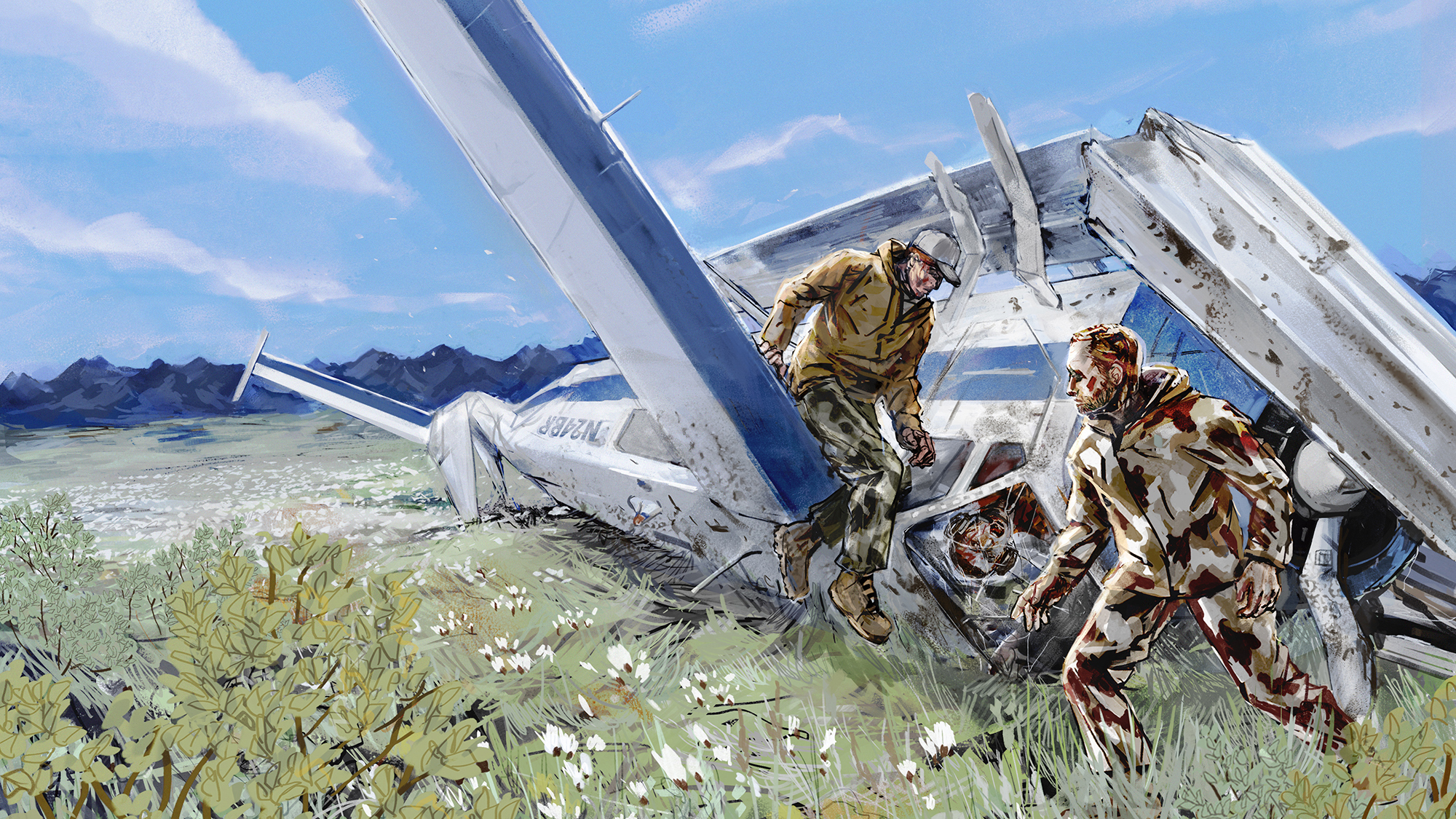This is the first story in our This Happened to Me series, which is based on our long-standing adventure comic first published in 1940. We will be publishing one each week in the coming months.
BY THE TIME we started glassing for moose the morning of Sept. 17, I figured the worst of our troubles was over.
I was with my buddy Cal Stefanko and his dad, Craig, and this was a bucket-list trip: my first fly-in Alaska moose hunt. It was a do-it-yourself hunt, and the only help we had was from the air taxi that had dropped us and our gear at the lake we were camped by.
I was lucky enough to kill a big bull during our first day of hunting on Sept. 13, but I quickly learned how difficult it is to pack such a massive animal across that unforgiving and uneven country. I had shot the moose 2.5 miles away from where we were camped, and it took us the rest of that afternoon and the entire next day to pack everything back to camp.
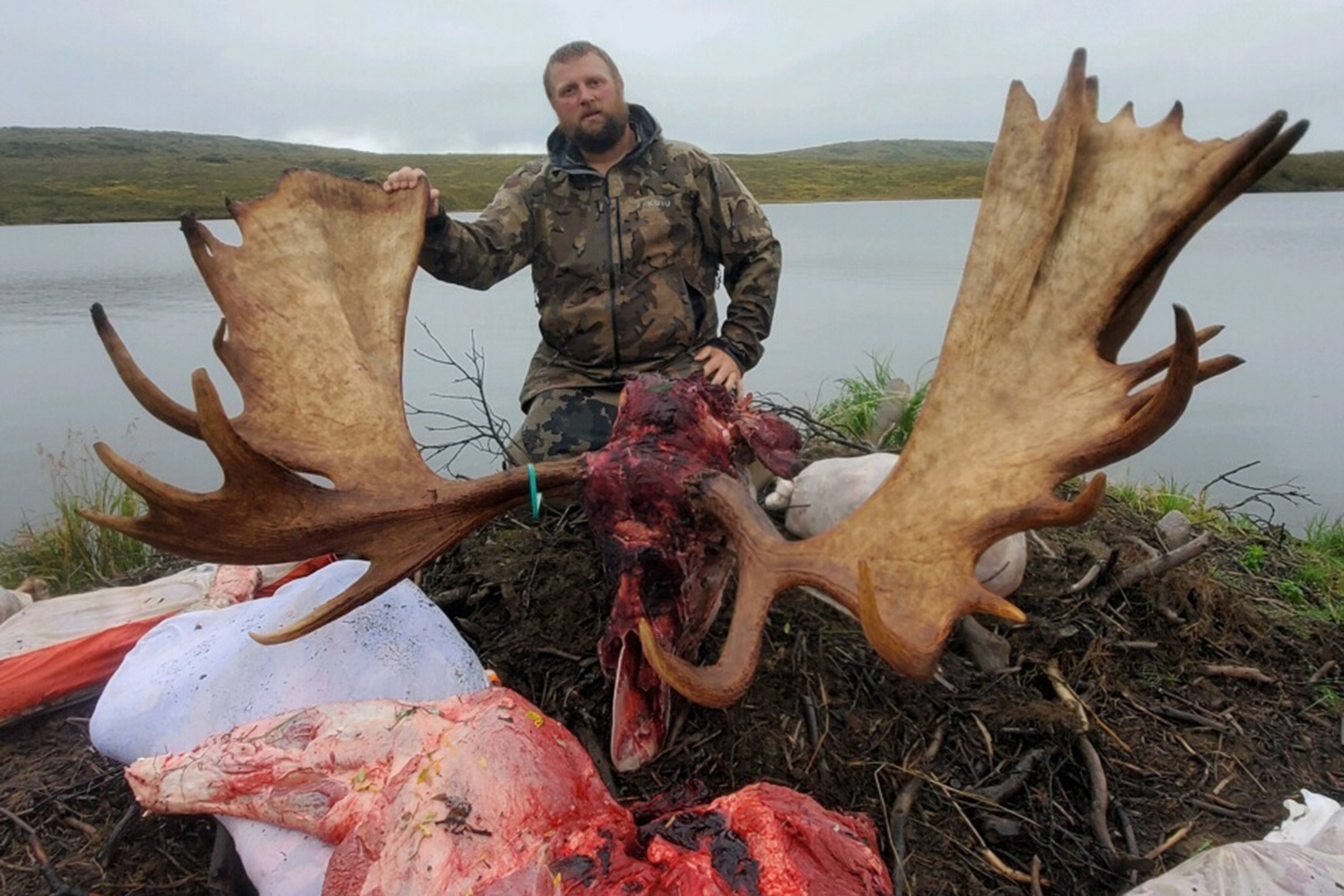
We spent the next several days hunkered down in our tent as a typhoon lashed the coast, bringing floods, downpours, and brutal winds to most of southwestern Alaska. The storm was actually a blessing, because we were so damn tired that we could hardly get out of bed those couple of days. At 70 years old, Craig was exhausted. My own body was toast, and even Cal, who is only 22, was beat. By the time the storm passed through, we could hear bulls in every direction. With one more tag to fill, Cal and I made a deal: We wouldn’t kill another moose unless we could recover it within a mile of camp.
Read Next: This Happened to Me: I Almost Froze to Death on a Solo Bighorn Hunt
We kept to our word and the next afternoon a huge, 70-plus-inch bull came in slowly and crossed the river. Cal dropped it with one shot at 15 yards—just 350 yards from our tent. After caping out the bull and skinning it, we returned to our tents and passed out.
The next morning, I used my Garmin inReach to message the bush pilot. I let him know that we had tagged both our moose and were still quartering the second one. We would be ready to get picked up later that day. But it was foggy and raining with low visibility, so the pilot told me to touch base with him again that afternoon.
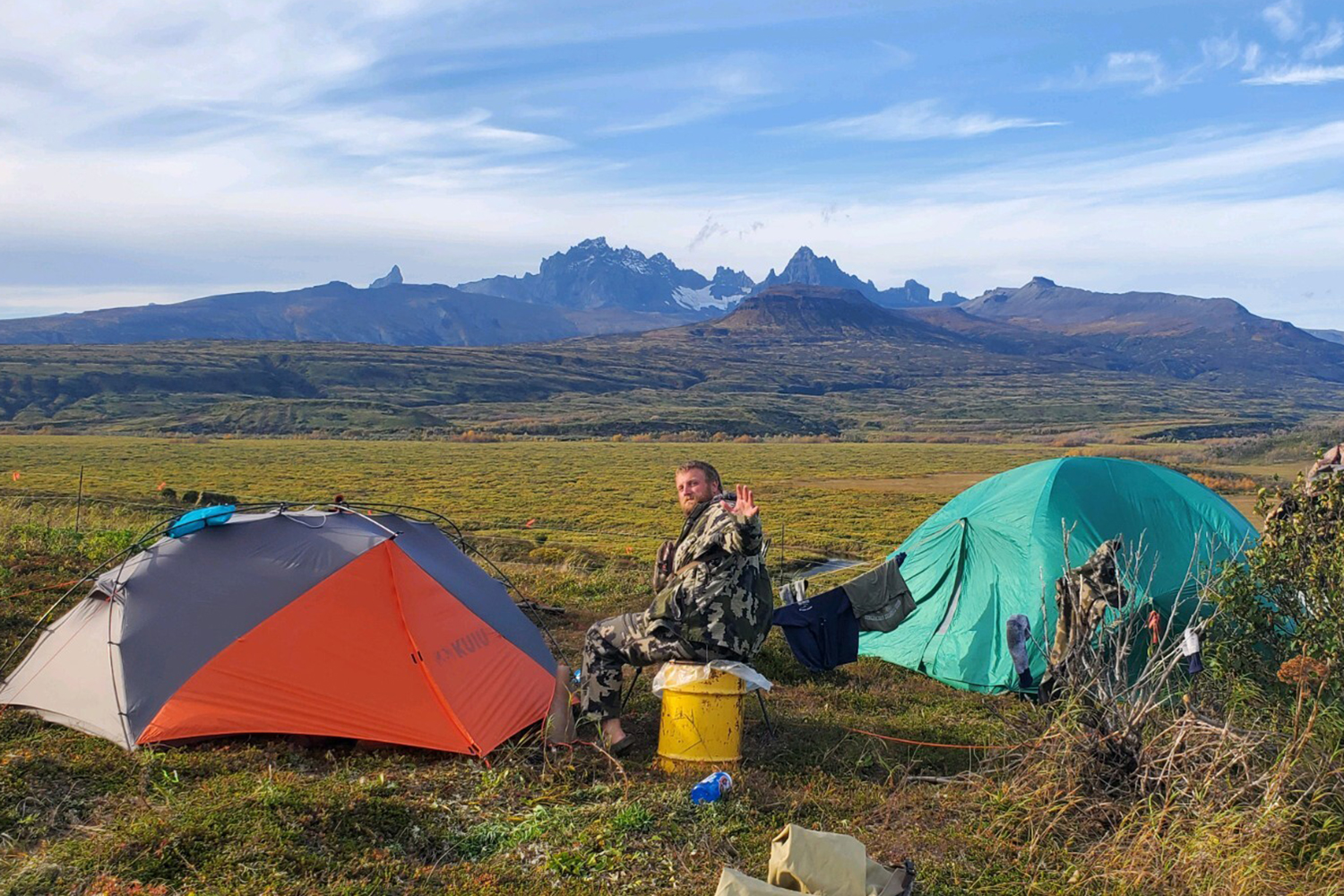
We finished with Cal’s moose by lunchtime, then napped some more. I stepped outside the tent at 4 p.m. and let him know the fog ceiling had lifted. I told him we could see the mountaintops all around us.
“We’re on our way,” he replied. “We’ll be there at 5:30.”
Because of all the added weight from our moose, they sent two Beavers to pick us up. Our lake didn’t have enough runway, so the two pilots puddle-jumped all our gear to a bigger lake nearby. We loaded both planes and distributed the weight evenly, but by this time the weather started getting really bad again—and so did our luck.
I climbed into one plane beside the pilot, and Cal got in the back seat. Behind him was the cargo net holding the giant moose antlers and some of our gear. Craig, the rest of our gear, and the meat were with the other pilot in the second plane.
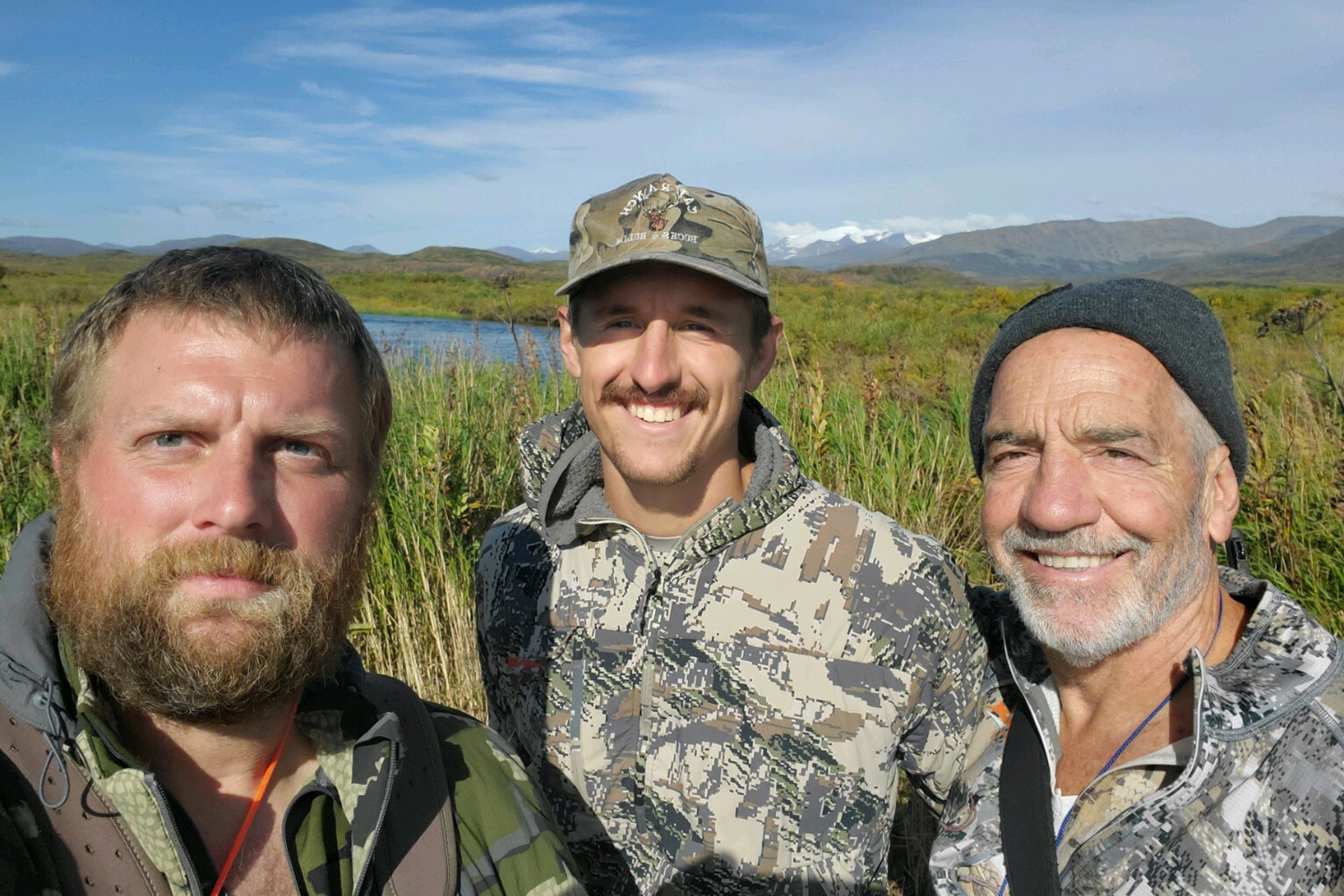
Our pilot took off first. He pointed the plane to the north—the only direction without the big, steep banks that surrounded us. But as we started to climb up out of the bowl, a huge crosswind slammed into our right wing, turning the plane. The gust shoved the tip of the left wing down and into the water. Now we were careening west—straight toward a 20-foot bank.
The pilot tried his best to get us off the water, but we didn’t make it. The left pontoon rammed into the bank and catapulted us, spinning, into the sky. Then the plane started to slow and tilt, and we rushed toward the earth again, nosediving as the tundra sped up to meet us. The impact was so severe that the plane flipped over.
The first thing I said was, “Cal, you OK?”
But then the pilot started yelling. “We gotta get out!” he shouted.
I unhooked my seatbelt, but I didn’t realize we were upside down. I fell straight onto the roof of the plane, disoriented.
The whole windshield was broken, so I crawled out and hit the SOS button on my Garmin. I turned around and saw Cal staggering out of the side door, and then the pilot came last, crawling out through the windshield. He was bleeding from his head, and he kept yelling, “We gotta get away from the plane!” He thought it was going to catch on fire.
The three of us ran for all we were worth back to the lake. I saw the other Beaver pulling up as we arrived, and they were in shock, too. They had seen the whole horrible crash and couldn’t believe we were still alive. Craig was up front with the other pilot, and we could see his stricken expression even through the windshield. He was as white as a ghost because he thought he’d just lost his son.
Eventually we determined the wrecked plane was safe to approach—there were no visible sparks, and we couldn’t smell gasoline—so we grabbed our gear from the back. Then we loaded our essentials into the other Beaver, and we all flew back to King Salmon.
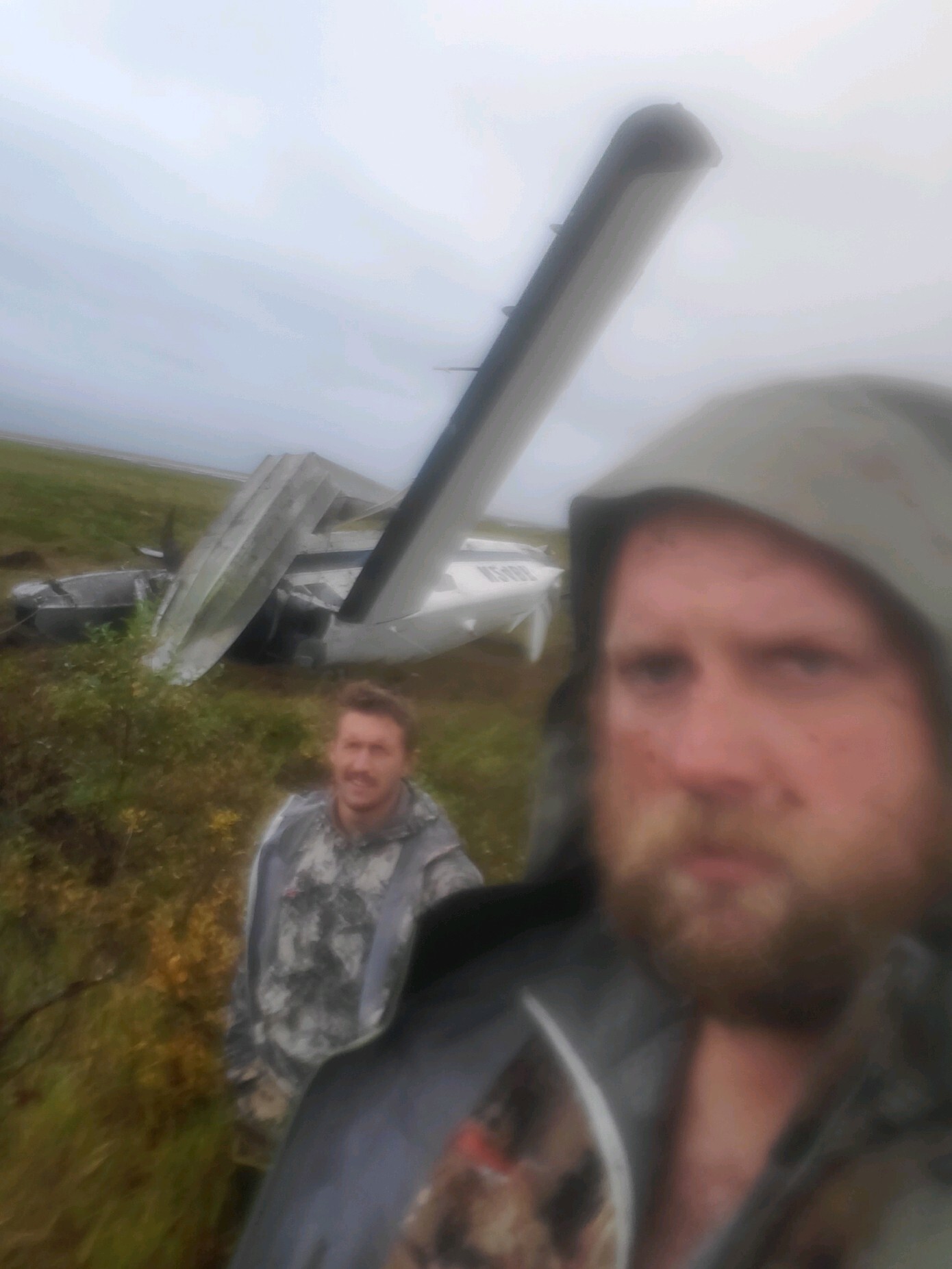
Meanwhile, my wife was getting calls from the Alaska State Troopers and search-and-rescue personnel. “Your husband has been in a plane crash,” they all told her. She was worried at first, but eventually decided that since I was able to hit the SOS button—and because I’m a nurse—we’d be able to survive for at least a night.
After we landed safely, the authorities took me, Cal, and the pilot to get checked out at the hospital. I had some cuts in my hand that required glue, and the pilot needed 17 stitches in his head. The investigators were already there to ask us questions, and everyone we spoke with said they had no clue how we walked away from the plane crash. With those kinds of G-forces, they explained, we should have died on impact.
The pilot recovered, but that turned out to be his last flight. He was an awesome guy and said he’d been flying up there for 40 years, but he told his boss that day that he was done. He retired on the spot.
Read more OL+ stories.
